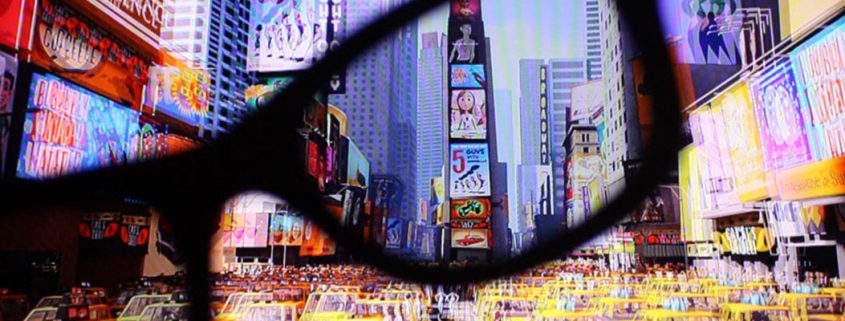A Comparison of 3D Display Techniques
Both IMAX and REALD glasses use a set of polarized lenses to view stereoscopic movies at the Theatre. Polarized glasses benefit from the fact that each eye receives a full color image and this removes the problems caused by color ghosting. Linearly polarized systems usually require two aligned projectors that have their filters set at 45° and -45°.
The now rare StereoJet image technology allowed a stereoscopic printed image to be presented in a lightbox and viewed using polarized glasses.
Anaglyph glasses are very common. Red / Cyan anaglyph images are easy to prepare and can be viewed on computer monitors, and printed on consumer inkjet printers. Most of us can remember anaglyph glasses being included with comic books when we were kids. Stereoscopic images prepared using this technology often suffer from color ghosting artifacts. These artifacts can be reduced with color correction. In my experience Red / Cyan glasses provide better color fidelity than Red / Blue 3D glasses due to the fact the cyan channel has both blue and green color components.









